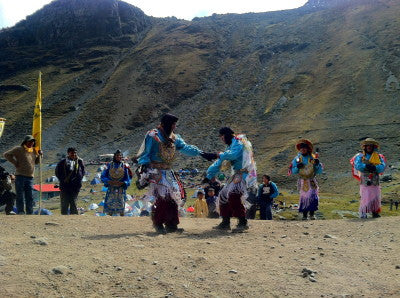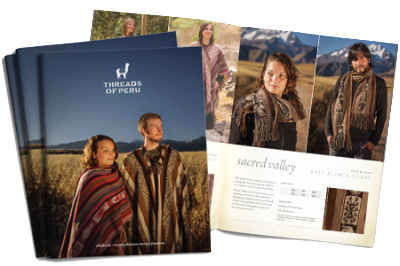Even having lived well over a year in the sky scraping city of Cusco, the daily interaction of ancient cultural legacy and a cosmopolitan, international destination continues to thrill and inspire me every day. Accordingly, after reading the highly recommended “Cochineal Red” by British archaeologist, Hugh Thompson, I was anxiously awaiting for June and one event in particular that would undoubtedly have me awe-struck by Andean mysticism. Boasting thousands of attendants, 4 days of dancing, an overnight mountain pilgrimage and “bear men" spirits - all at a gasping 5,000 meters above sea level - the festival of the Señor de Qoyllur Riti was sure to not disappoint.
As the legend was first told to me, the pagan-Catholic festival dates back to 1780 and the friendship of two Andean boys - Mariano Mayta, an indigenous herder, and Manuel, also a young villager of the high communities. On the Quillqipunku mountain, Manuel mentored Mariano in properly caring for his herds of alpacas, helping them to grow in health and number. When it came time to thank Manuel, however - taking pieces of Manuel's alpaca clothing to Cusco but finding nothing to equal its luxurious quality - they were confronted by a delegation sent by the archbishop, whose curiosity had been piqued by talk of the exceptional cloth. Upon their arrival, Manuel was transformed into a shrub and Mariano died soon after, his body laid to rest under a stone with the image of Christ. Today, and for many centuries since, that stone and its associated festival are known as the Lord of Qoyllur Riti.

Viewed from above, the tent-covered valley.

Possibly having come walking from hundreds of miles away, this elderly gentleman lit candles in homage at the entrance to the valley.
With festivities beginning on June 12 and continuing until June 19, it was estimated that 100,000 people - Peruvian and foreign alike - were in attendance in the glacial basin of the Sinakhara mountain. Sprawled across the lunar landscape are countless tents, camp stoves heating soup for cold-weary bodies and savvy vendors in tarp-covered stalls, offering everything from incense to rosaries. Their company is made of able dancers, fervent believers and general spectators - coming from over 500 nations and invited by the initiated brotherhood of Qoyllur Riti - to pay homage to the apus (mountain gods), Christian saints or both. That the two belief systems would seemingly contradict one another rather than combine in a spiritual rite of passage is more an afterthought to the pulsing energy radiated down from the surrounding snow-capped peaks. They say it is sacred, as the legend would have us believe, and after surviving the 5-mile hike to cross into the valley, it is a belief almost impossible to contradict.

Other pilgrims were seen from afar, coming down thin mountain trails at daybreak to join the growing crowds.

Dana and Kaitlyn, huddling together for a photo - and to keep warm!
Our small expedition of gringos and peruanos - arriving still blurry-eyed in the small town of Mahuyani, 3 hours from Cusco, at 4 AM - turned our hiking books uphill with increasing excitement as the morning sun peaked the horizon and drums guided us along with hundreds of others on the thin dirt trail. And although for only one afternoon as opposed to the 4 long days that others would spend watching and fueling the festivities, we were able to wander at leisure and enjoy - lighting candles in the music- and dance-filled church, joking with the high-voiced ukukus (bear men of the Qoyllur Riti brotherhood) and trying our hand at building miniature representations of our future lives in the juego de las casitas (the game of little houses).

The "game of little houses" has children and adults alike playing with stones, sticks and toys! Building little houses, fields and even garages, attendants at Qoyllur Riti participate in this game to "build" their future lives, asking for blessing and prosperity.

A half circle of ukukus surround a battling pair of dancers, who take turns ceremoniously whipping each other around the ankles. They actually wear multiple pairs of high socks to soften the sting of the whip!
This is how I think of Cusco - as having become an intermediary world between cultural tradition and global tourism. The morning of our pilgrimage to Qoyllur Rit’i, that interaction was once again brought to my attention in that although we were part of a mass of South American pilgrims, I overhead a local man commenting, “There are tons of foreigners this year!” It would be easy to take that and the increasing presence of tourists (ourselves included!) as foreboding the commercialization of this incredibly unique ceremony. But in coming within arms reach of elaborately dressed practitioners, still dancing centuries old dances and channeling an ancient energy in this millennial year of 2014, I also feel emboldened that Cusco will always make tradition the first priority.








 2) What inspires you to work for Threads of Peru?
2) What inspires you to work for Threads of Peru? 6) Describe the happiest/most touching moment you have experienced in the communities?
6) Describe the happiest/most touching moment you have experienced in the communities?